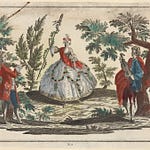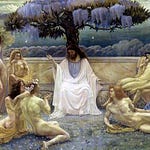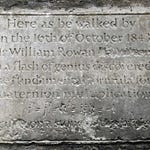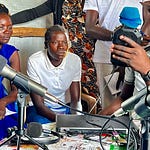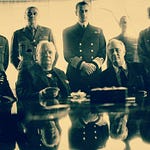Originally published on May 18, 2016 (Episode 58)
Introduction
This podcast began at Augustana College in Rock Island, Illinois. Rock Island is one of what the locals call the “Quad Cities”, four towns or small cities–Rock Island and Moline in Illinois, Davenport and Bettendorf in Iowa–that stretch along the Mississippi River at what used to be the largest rapids on the Upper Mississippi, just above where the Rock River flows into the Father of Waters. These rapids are centered on Arsenal Island, which has been occupied by the United States Army since 1830 when it was Fort Armstrong.
If there’s a genius of this curious place, it’s Black Hawk, the war chief of the Sauk tribe that once had its town near the junction of the Rock and Mississippi, and which summered on what’s now Arsenal Island. Around here, Black Hawk is the name of a college, a hotel, and a chain of banks. Farther afield there’s the Chicago Black Hawks, and the Army’s workhorse helicopter that owe their name to his inspiration. As my guest today, my colleague Jane Simonsen has said in a recent article, Black Hawk is now “an ‘Indian’ figure tinted by a vague sense of history and burnished by settler-colonist nostalgia.”
Today Jane and I discuss Black Hawk, but more than that. We discuss what Black Hawk wore. This turns out to be very important, because what he wore provoked white Americans to comment, and sometimes provoked them to irritation or pity. Fashion and how it’s appropriated say not just something about the wearer, but the beholder. In this case, it says a lot about how we want Indians to be–and in a strange way, very hip, with-it, post modernly conscious people turn out to have a sensibility remarkably similar to people in the 1830’s
About the Guest
Jane Simonsen is Professor of History at Augustana College and author of Making Home Work: Domesticity and Native American Assimilation in the American West, 1860–1919.
For Further Investigation
Life of Ma-Ka-Tai-Me-Sha-Kia-Kak, or Black Hawk…Dictated by Himself, edited by J.B. Patterson (Boston, 1834)
Marshall Joseph Becker, “Matchcoats: Cultural Conservatism and Change in One Aspect of Native American Clothing,” Ethnohistory 52:4 (Fall 2005), 727-787
Nick Brown and Sarah E. Kanouse, Re-Collecting Black Hawk: Landscape, Memory, and Power in the American Midwest (Pittsburgh, 2015)
George Catlin, Wi-jún-jon, Pigeon’s Egg Head (The Light) Going To and Returning from Washington, 1837-1839
Robert Duplessis, The Material Atlantic: Clothing, Commerce, and Colonization in the Atlantic World, 1650-1800 (Cambridge, 2016)
Elizabeth Hutchinson, “The Dress of His Nation: Romney’s Portrait of Joseph Brant,” Winterthur Portfolio 45:2/3 (Summer/Autumn 2011), 209-227
Patrick J. Jung, The Black Hawk War of 1832 (Norman, OK, 2008)
Ann M. Little, “’Shoot that Rogue, for He Hath an Englishman’s Coat On!’: Cultural Cross-Dressing on the New England Frontier, 1620-1760”, The New England Quarterly 74:2 (June 2001), 238-273
Kerry Trask, The Black Hawk War: Battle for the Heart of America (New York, 2006)
Listen & Discuss
How does clothing shape perception—then and now? Share this episode with someone interested in Native history, fashion, or cultural identity.




